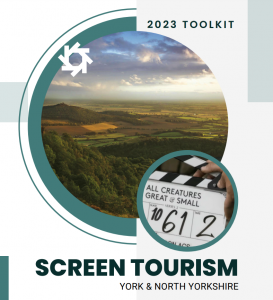
Resources for designing yourself
If you lack design experience but can’t afford a graphic designer for all your work, consider trying to create visuals yourself. Fortunately, there are free online graphic design tools designed for beginners. These tools can help kickstart your creative journey. While they may not offer the same level of detail as a professional designer or agency, they can still produce engaging results, especially on social media and online channels. We’ve listed some popular tools below and guide you through the basics of creating compelling designs with them.
Choose the right software
There are several free online graphic design tools to choose from. Some of the most popular options include Canva, Adobe Express, VistaCreate, and Pixlr. Select one that suits your needs and preferences. Canva, for example, offers a user-friendly interface with a wide range of templates, making it an excellent choice for beginners.
Start off with templates
Once you’ve logged in, you’ll usually be greeted with a dashboard that allows you to create various types of designs, such as social media posts, leaflets, presentations, and more. Start by browsing the templates library relevant to your project. Templates are pre-designed layouts that you can customise with colour, logo, copy, photos, etc. to fit your content. Look for templates that match the general style and purpose that you want to achieve with your design.
Customise your design
After selecting a template, you can customise it to your liking. Here are some key elements to consider when customising your design:
- Text: Edit the text on the template by clicking on it and typing in your own content. You can change fonts, sizes, colours, and alignment as needed.
- Images: Upload your own images, including photos, or choose from the tool’s library of stock photos. Adjust the size and position of images within the template.
- Colours: Modify the colour scheme to match your brand or your personal preferences. Most tools allow you to choose custom colours or select from predefined palettes. You can also change the background colour or use an image as a background.
- Graphics: Add shapes, icons, and other graphic elements to enhance your design. Resize and reposition them as needed.
Once you’re satisfied with your design, it’s time to download it. Most tools offer multiple file formats such as JPEG, PNG, or PDF. Choose the format that suits your needs and save the file to your computer. You can then share or print your design as desired.
Explore online tutorials
There is a wealth of video tutorials for different tools available, both from the software company themselves and from experienced users. These resources can help you learn more about design principles, tips, and advanced techniques.
Experiment!
Graphic design is a skill that improves with practice. Experiment with different templates, styles, and layouts to improve your abilities and develop the design style that suits your business.
Free online graphic design tools provide an accessible way for beginners to create visually appealing designs without the need for prior design experience. By choosing the right tool, customising templates, and exploring resources, you can unleash your creativity and produce professional-looking graphics for a variety of purposes.
Learn more
Secure your place: Business Support Programmes 2024
The Growth Hub is hard at work curating a new package of business support programmes for 2024. The programmes will be available to businesses located in North Yorkshire, funded by North Yorkshire Council’s Shared Prosperity Fund.
Choosing your online marketing channels
To help you make the right choices for your business, let’s go over some of the options available to you. It’s important to consider the pros and cons for each marketing channel and whether the channel is a good fit with your target audience. Email marketing There’s often confusion about whether email is inbound or
Introducing Meld: North Yorkshire's new Business Community
Meld is a new community for people starting and running businesses in North Yorkshire. The team behind the project are building Meld to be a melting pot of ideas, support, advice, nice people and cool businesses. We hope this becomes a place you come to mix. connect. belong… and build.
Businesses given digital skills boost
Two Digital Transformation Days took place in Scarborough and Pickering, featuring expert insight from industry leaders. Hosted by York & North Yorkshire Growth Hub, around 50 businesses attended the free events. Coaches from Google Digital Garage led sessions on both days.
Digital Transformation Days Set to Empower Yorkshire Coast Businesses
Business owners and marketing managers in the Yorkshire Coast region are gearing up to take their digital offer to the next level as the York & North Yorkshire Growth Hub prepares to host two Digital Transformation Days, in collaboration with Google Digital Garage.
Business Support Programme: 1:1 Social Media Support with Catch Design
Businesses in North Yorkshire have the chance to supercharge their social media and dial up their digital marketing with fully funded 1:1 bespoke support from industry expert Sue Thompson of Catch Design Management.
How to create a profitable website and generate leads
Learn how to create a profitable website that can serve as a powerful tool to attract customers, generate leads, and increase revenue.
How to Sell Goods or Services to the Public Sector
Increase your customer base and increase revenue by learning how to successfully sell goods or services to the public sector with our expert advice.
Marketing for start-ups: A beginner’s guide
Marketing for start-ups can leave your head spinning, especially if marketing is new to you. Here’s a quick and easy guide to getting started with marketing for start-ups. How to make a plan when marketing for start-ups The best place to start with your marketing strategy as a start-up business owner is to make a
How to create free publicity as a small business
Advertising for small business can be a complex and is often one of the biggest costs you have to cover.
How to keep your business pitch simple
Like most other communication, keep your business pitch simple, informative and fun.
Customer relationship management tools
There are lots of great customer relationship management (CRM) tools out there that you could use in your business.
Fire up your Food and Drink business with Make it! toolkits
A free video toolkit to help growing food and drink businesses in York and North Yorkshire. Essential ingredients for food and drink business success.
Screen Tourism Toolkit
A free screen tourism toolkit exploring the opportunities, showing best practice and connecting business with resources and support.
2022 Seminar Recordings
We have recently hosted a programme of in-person seminars and other events, some of which were professionally recorded and can now be viewed on our website.
Seminar Recording : Access to finance: Funding growth
This workshop will provide guidance on cost based pricing, calculating your costs before deciding an appropriate margin, as well as covering market based pricing asking questions such as: What value do you add? What are you worth? How do you position yourself?
Growthbox marketing service
The York & North Yorkshire Growth Hub are working with Growthbox, who help small businesses work out what marketing to do and connect them with their growing army of marketing experts all across the UK who can help them get it done.
Cookies and privacy notices: do I need them on my website?
This webinar will cover what cookies are and what cookie law is, what a privacy notice is, the laws surrounding both, and how to ensure you are being transparent to your customers when creating a cookie policy and privacy notice.
An introduction to sales
This webinar will help you get sales confident by providing tips and guidance on mastering important communication skills.
Free Webinar : How to be a LinkedIn 'All-Star'
This webinar will explore how you can use LinkedIn as a part of your social media strategy, helping you to create connections and make an excellent first impression.
Free Webinar - Customer Retention Marketing
This webinar will provide you with practical tips to help you retain your customers and build a relationship with your audience.
Webinar: Capitalising on your social media impacts
This webinar will provide you with guidance on how to move ahead with your marketing strategies in our current climate, to ensure that you maximise on the opportunities presented by new social media trends in 2021 and beyond.
Leadership Series: Empowering your team – learning to delegate and let go
This free webinar will help leaders consider what gets in the way of delegation and how important it is to empower the team to deliver on your behalf.
Wellbeing Series: Supporting return to work
This free webinar with the University of York will introduce a return to work toolkit for managers and team members.

























